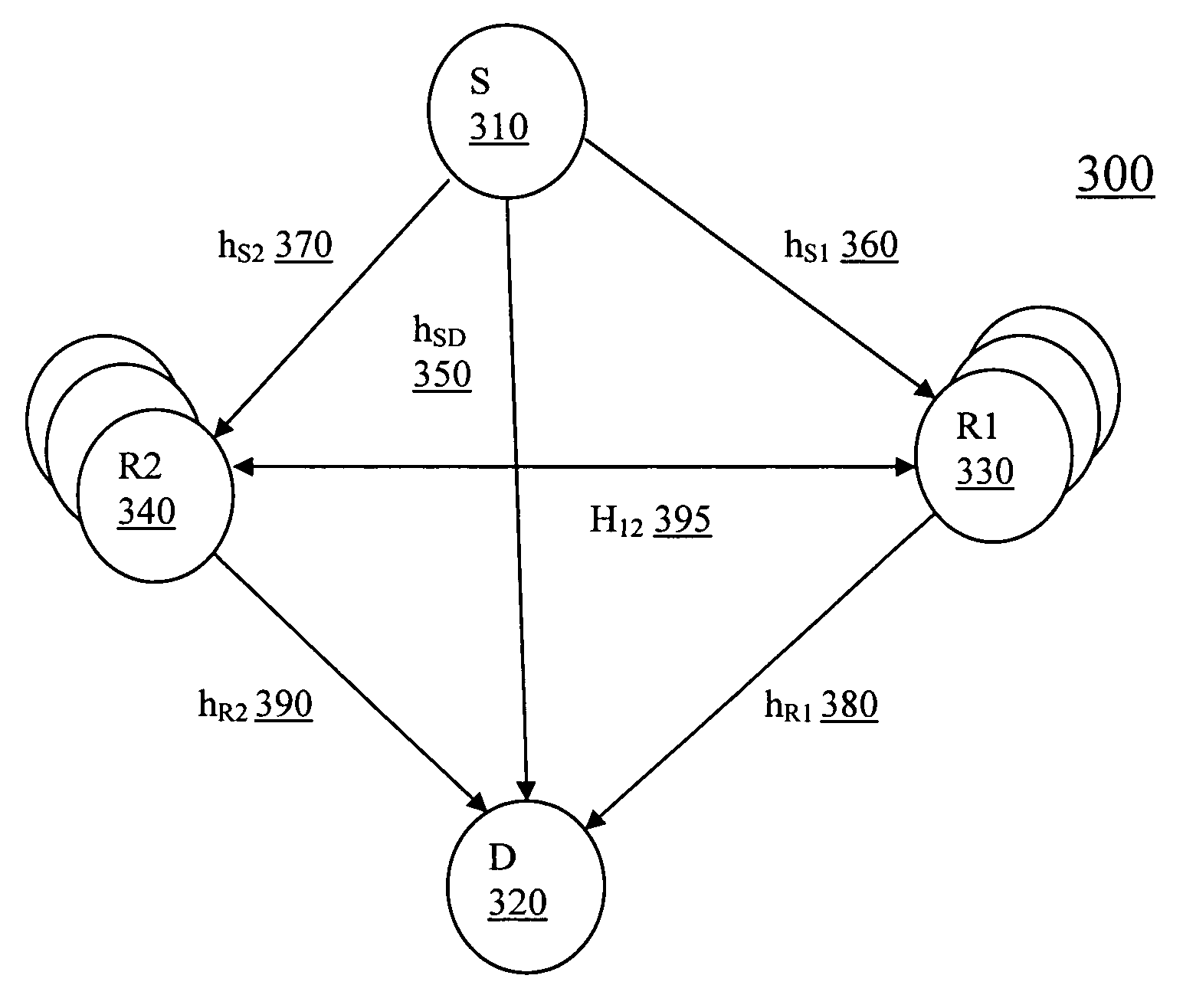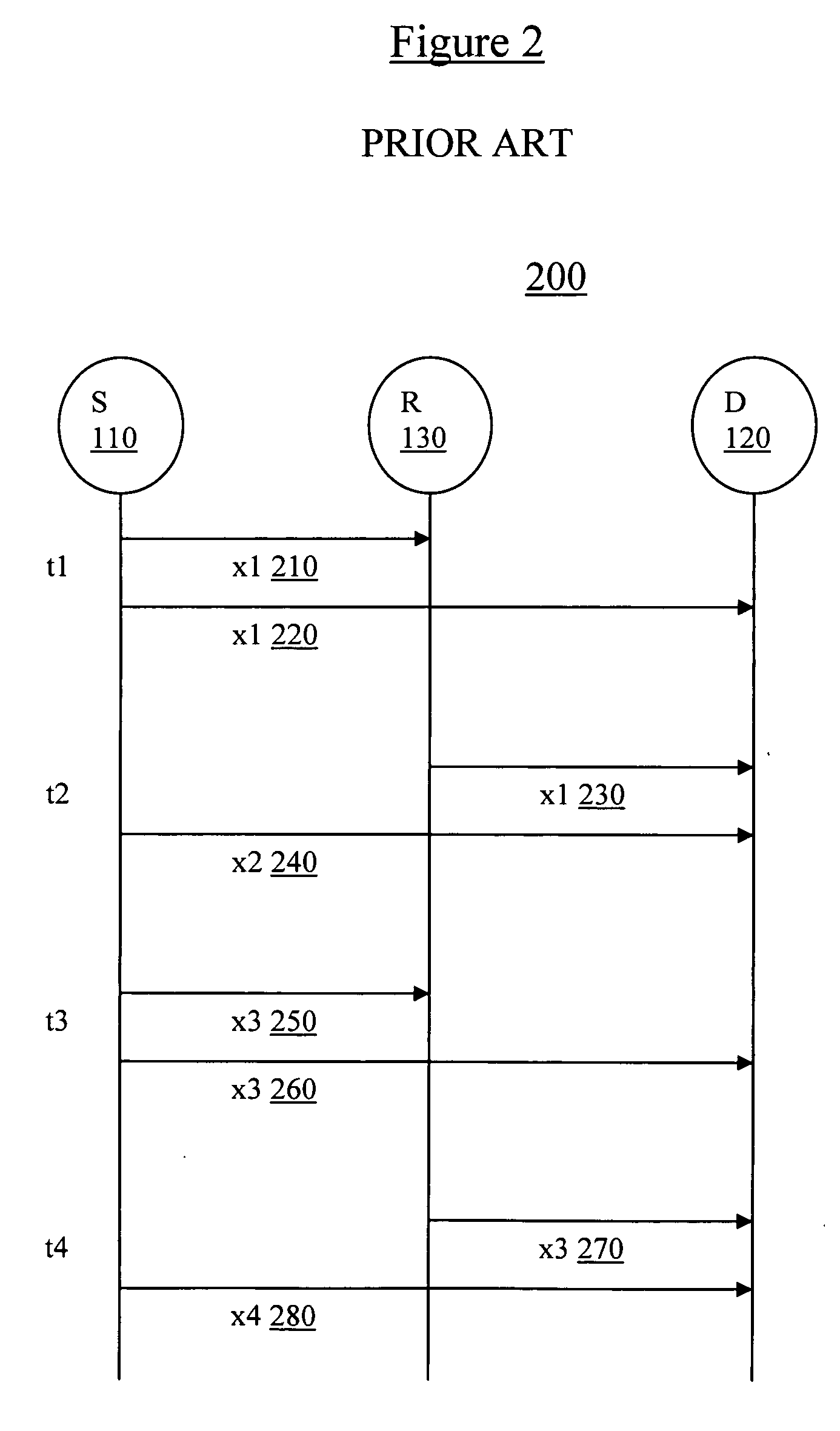Symmetrical cooperative diversity in the relay-enabled wireless systems
a wireless system and cooperative technology, applied in the field of symmetrical cooperative diversity in the relay-enabled wireless system, can solve the problems of affecting communication, affecting communication, and affecting the quality of communication,
- Summary
- Abstract
- Description
- Claims
- Application Information
AI Technical Summary
Benefits of technology
Problems solved by technology
Method used
Image
Examples
Embodiment Construction
)
[0031]In cooperative relaying, a relay R processes received signals from a source S and to retransmit to a destination D by means of AF (amplify-and-forward) or DF (detection-and-forward) modes. Typically, the relay R receives a transmission from the source in a first time cycle, and then rebroadcasts the received transmission in a second, subsequent time cycle.
[0032]Cooperative diversity is conventional cooperative relaying strategy to provide diversity gain to the system without increasing transmission time or transmission bandwidth. Referring now to FIG. 1 (Prior Art), a cooperative diversity system 100 has a source S 110, a destination D120, and a single relay R 130 with single antenna transmitter and receiver (or transceiver). As depicted in FIG. 1, an information source S 110 and a destination D 120 communicate to each other either directly from S 110 to D 120 via a transmission hSD 140 or through an indirect relay station R 130 to the destination D 120 via transmissions hSR ...
PUM
 Login to View More
Login to View More Abstract
Description
Claims
Application Information
 Login to View More
Login to View More - R&D
- Intellectual Property
- Life Sciences
- Materials
- Tech Scout
- Unparalleled Data Quality
- Higher Quality Content
- 60% Fewer Hallucinations
Browse by: Latest US Patents, China's latest patents, Technical Efficacy Thesaurus, Application Domain, Technology Topic, Popular Technical Reports.
© 2025 PatSnap. All rights reserved.Legal|Privacy policy|Modern Slavery Act Transparency Statement|Sitemap|About US| Contact US: help@patsnap.com



